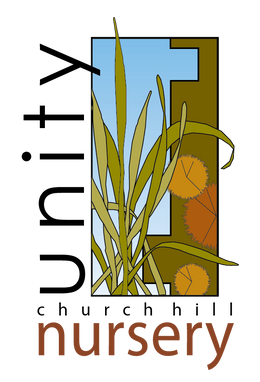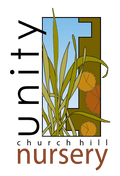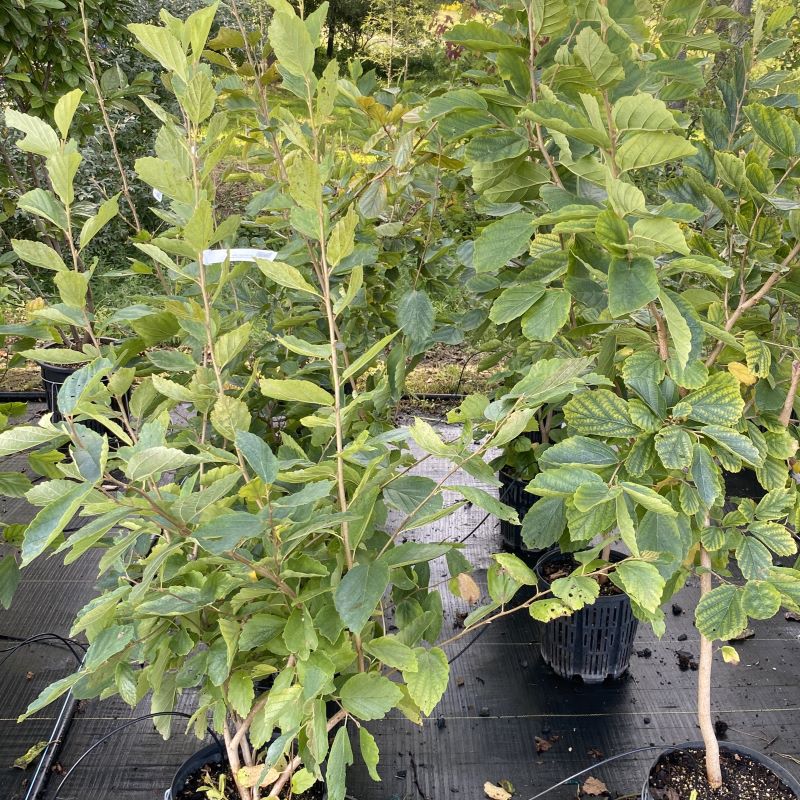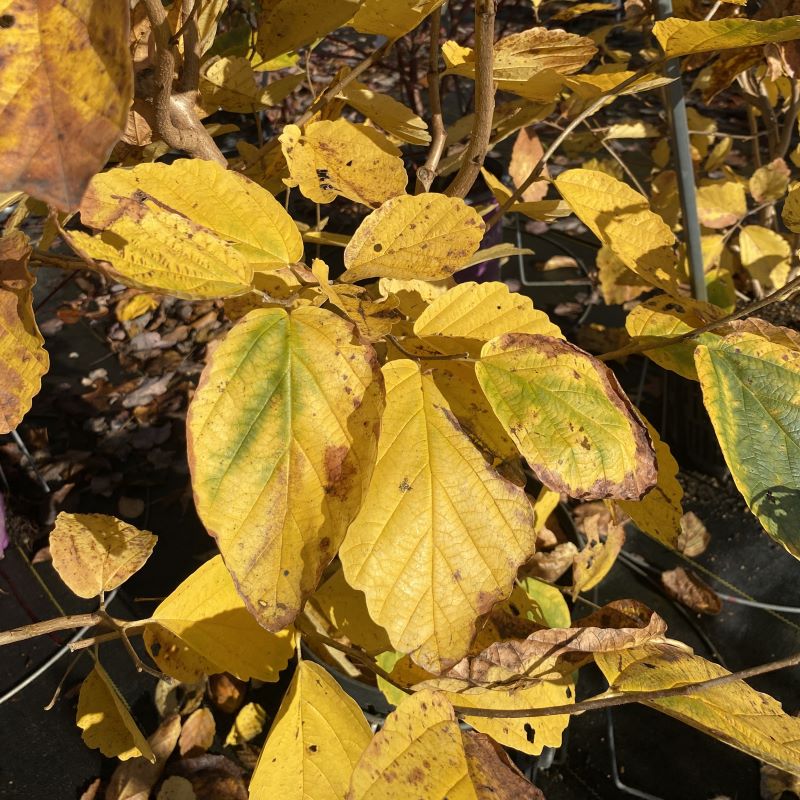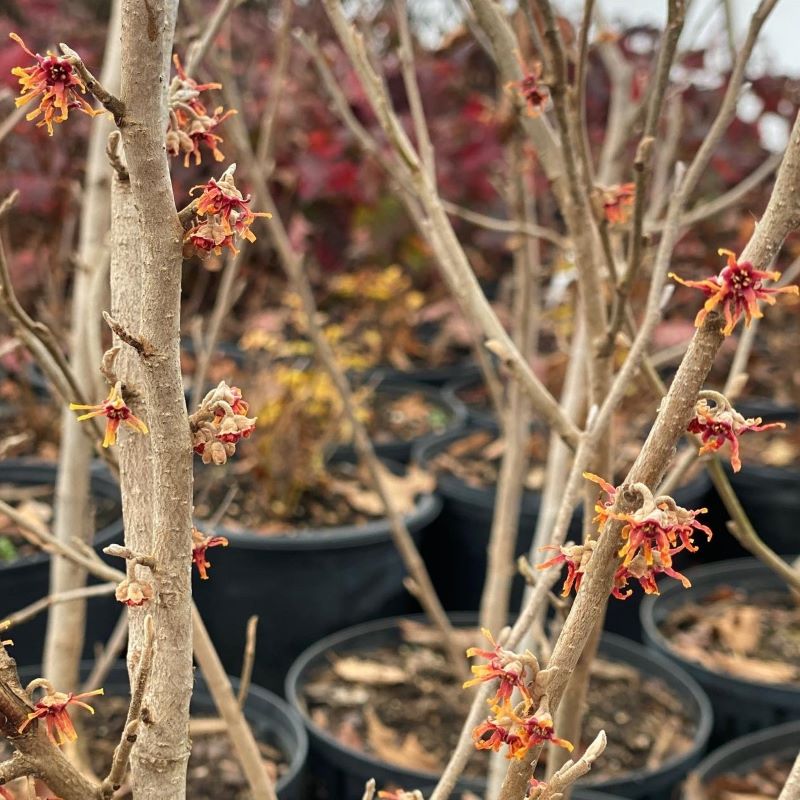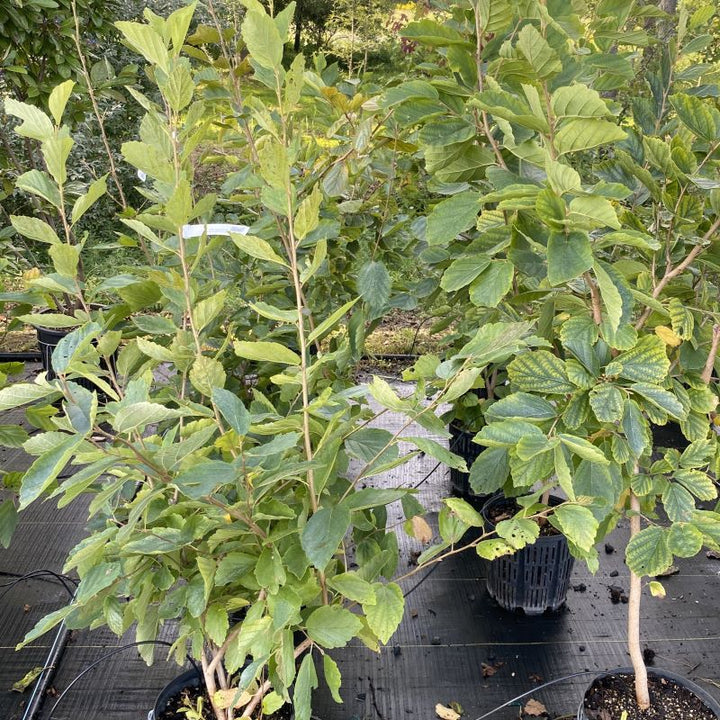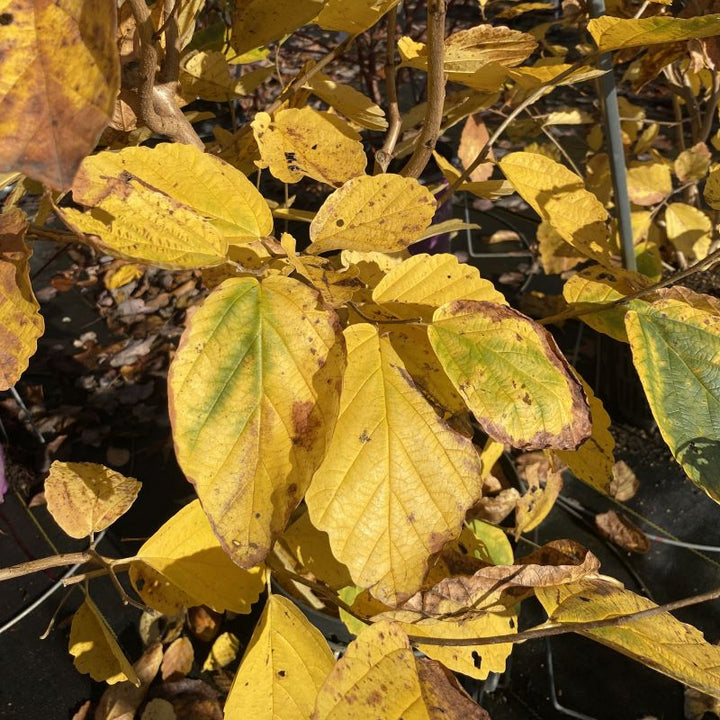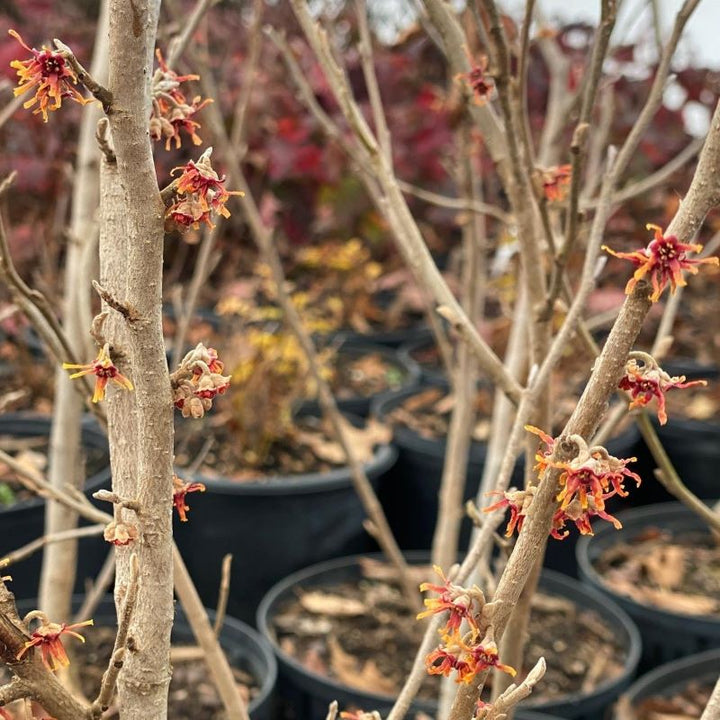Hamamelis virginiana (American Witch Hazel) Unity Grown
- In stock, ready to ship
- Inventory on the way
Witch-hazel is a deciduous shrub or small tree for all seasons. In spring it bursts forth in a new robe of greenery, while in summer its thick, distinctively scalloped leaves with a matte finish form a dense cloak of dark green in the woodland understory. Autumn is when it shines. The leaves turn a rich buttery color, and last year’s popping pods loudly announce its presence, as the spidery, lemon-yellow flowers burst forth on the suddenly leafless branchlets. Even in winter it’s a standout with its zigzag, naked twigs, bearing the squat, light brown, two-beaked capsules, both old and new.
In the Northeast, witch-hazel is the last native woody plant of the season to flower, spreading its blooms in September, October, or November. Some blooms may open as late as February in the Washington, DC, area in mild winters. Witch-hazel is especially appropriate as a Wildflower of the Year because it was first discovered in Virginia, hence its specific scientific name, virginiana.
American Witch-Hazel was named Wildflower of the Year in 2002
(Courtesy of Virginia Native Plant Society)
